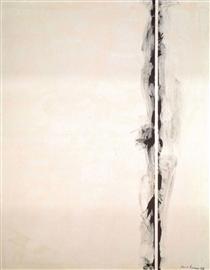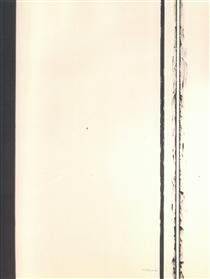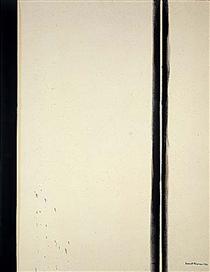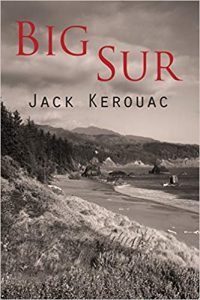
Nighthawks by Edward Hopper, 1942.
In the diner, no one is eating. Three customers lean on their tall stools, none of them speaking. And behind the counter, a soda jerk bends to retrieve something we can’t see. Like a bartender, his job is to serve lonely people late at night, to pour them drinks, because that’s all they want in front of them: sturdy cups of coffee, cooling and forgotten.
This is Edward Hopper’s Nighthawks, one of the best-known American images of the twentieth century. As with many of Hopper’s paintings, the canvas asks us to gaze through a window—the diner seems made almost entirely of glass—to watch people who do not know they’re being watched. A window contradicts itself. Both a barrier and an act of transparency, it keeps us out and lets us in. “No one is there to share what we see,” explains the poet Mark Strand in an essay about Nighthawks, “and no one has come before us. The scene of the picture belongs only to us. And what we experience will be entirely ours.” We stare at the four people in the restaurant as if we are the first ones to discover this sad tableau, and we wonder about the patrons, “What are they thinking?” their faces reduced to the simple shapes of eyes, nose, and mouth.
There’s a woman at the lunch counter. She was modeled by Hopper’s wife, Jo. But, still, she could be a sex worker, we think, her dress the red of desire, her hair a small, controlled flame. She holds what looks like a matchbook in her hands and studies it. A man in a slick, blue suit sits beside her. He could be her john. They are close enough to touch but don’t, his hand curled around a cigarette. They are together. They are apart. We can’t help trying to read a narrative in their bodies.
Around the corner of the counter, a few seats away, a man sits with his back to us. His suit is made of darkness, his film noir fedora casting more dusk across the side of his face. He is the mood of America in early 1942, Pearl Harbor having been bombed only a month and a half before the completion of the painting. It’s possible to see menace in him, the posture of a threat. He might be a man about to trade his suit in for another kind of uniform. Or, perhaps, he’s old enough to remember the last war, the acrid swirl of mustard gas, the instant coffee he drank from a tin cup at the front.
The diner cuts a hard angle into the street; other buildings positioned behind it appear flattened and two-dimensional, like a set for a play. As is often the way with Hopper’s work, even the lighting here is theatrical. Inside the restaurant, on this night of solitude, no fluorescent lighting has ever been this sallow, has ever cast such a queasy, green glow across the floor. And the only door visible in the diner leads to the kitchen, not to the world outside. If these people wish to go, they will have to leave by an exit out of view, off stage.
When I was a young woman, I worked as a barista in a tiny coffee shop. And, although I poured many shots of espresso, steamed gallons of milk over the years, most of my days were spent brewing vats of coffee. I learned to expect the burn of hot liquid spilled on my hands, the coffee slopping over the rim of the paper cup as I covered it with a plastic lid. I learned to expect the smell of stale beans in the seams of my clothes. Still that initial sip of bitterness each morning never stopped surprising me, even when I came to like it.
Coffee is what we drink to wake up or to stay awake. It’s the drink of early risers and workaholics. Also insomniacs. As adults, many of us come to crave this brown sludge, surely the very definition of an acquired taste. When I was a barista, my first customers of the day always ordered their coffee black, no milk or sugar to soften its sharp edge. The customers who came in just before I closed the store for the evening took theirs straight as well, often on their way to the late shift at the hospital down the street.
The shop where I worked was nothing like the diner in Nighthawks. It had brief, smudged windows and a straightforward exit to the outside. But I served many people who resembled the ones in the painting. I watched them ruminate over their small cups of shadow, alone even in their togetherness. “What is it about Hopper?” asks Olivia Lang in The Lonely City. “He never much liked the idea that his paintings could be pinned down, or that loneliness was his métier, his central theme.”
Haven’t we all hunched over our coffees like this, Hopper’s theme equally our own? At some late hour, we have all felt utterly by ourselves in rooms where the light seemed suddenly strange, so green, as if rendered with meticulous brushstrokes. How still we have sat in the sickly, bitter light.
Jehanne Dubrow is the author of nine poetry collections, including most recently Wild Kingdom (LSU Press, 2021), as well as a book of creative nonfiction, Throughsmoke: an essay in notes (New Rivers Press, 2019). Her work has appeared in NER as well as in Poetry, Southern Review, and Colorado Review, among others. “Small Cups of Shadow” is part of her second book of creative nonfiction, Taste: A Book of Small Bites, which will be published by Columbia University Press in 2022.
NER Digital is New England Review’s online project dedicated to original creative nonfiction for the web. “Confluences” presents writers’ encounters with works of art such as books, plays, poems, films, paintings, sculptures, or architecture.





